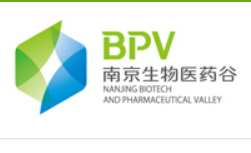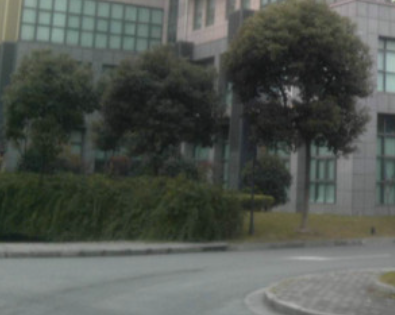▲共同第一作者:王凌翔;通訊作者:肖豐收,王亮;
通訊單位:浙江大學化學工程與生物工程學院,浙江大學化學系
論文DOI:10.1002/adma.201901905
全文速覽
本文主要對近年來抗燒結金屬納米顆粒催化劑的設計和應用方面的研究進展進行了綜述,總結了幾種穩定金屬納米顆粒催化劑的新策略,包括金屬?載體強相互作用、氧化物或碳層包裹,介孔材料封裝以及沸石分子篩晶體固定。
背景介紹
負載型金屬(單位點、納米簇和納米顆粒)催化劑被廣泛應用于的化學品、清潔能源和藥物的工業生產,以及污染物消除和光催化反應等,但始終存在著因高溫燒結或浸出流失而導致的失活問題。催化劑活性的再生恢復需要花費高昂的成本,將金屬從載體上浸出并重新高分散負載也十分困難。因此,理解催化劑的燒結機理對設計耐久型催化劑而言非常重要。
奧斯特瓦爾德熟化( Ostwald ripening )和遷移?合并( Migration?coalescence process )是造成金屬納米顆粒的燒結團聚的兩種機理,且有可能同時發生在催化劑的團聚過程中(?Figure 1 )。對金屬納米顆粒燒結機制的理解,促使著研究者們不斷開發穩定金屬納米顆粒催化劑的新策略。應用氧化物或碳層對金屬納米顆粒進行包裹,可以抑制金屬燒結,但也會掩蔽部分活性位點導致催化劑活性降低。因此,具有豐富多孔結構的介孔材料被用于封裝金屬納米顆粒。此外,氧化物包覆層可以引入大量的金屬?氧化物界面,也能調節催化劑的活性和選擇性。
但是,想要合成具有特定結構并同時改善催化性能的催化劑依然十分困難。將金屬活性組分固定在具有剛性框架和特定孔道結構的分子篩晶體中,可以同時利用金屬的催化活性和分子篩的穩定性優勢,微孔結構也能促進分子傳質擴散并利用其擇型效應。由于分子篩的拓撲結構和微孔環境可以人為調控,選擇特定的金屬和分子篩,能設計出一系列可以應用于不同化學反應并具有獨特催化性能的催化材料。

▲Figure 1. Theoretical and experimental results for studying the metal sintering process. a,b) Reverse process and associated potential energy of detachment/attachment of a Pt adatom to Pt10/Pt11 clusters and Pt37/Pt38 clusters. c) Energy diagram of supported metal particles without and with the presence of reactants. d) Sintering behavior of Au NPs on TiO2?(101) surface.
研究出發點
一些文章已經對金屬納米顆粒燒結機理的相關研究做了總結,但很少有關于抗燒結金屬納米催化劑的制備策略的綜述。本文主要著眼于制備抗燒結金屬催化劑的新策略,包括金屬?載體強相互作用、氧化物或碳層包裹,介孔材料封裝以及分子篩晶體固定( Scheme 1 )。重點關注催化劑的結構設計和抗燒結性能,希望能對后續的研究有一定的參考和借鑒意義。

▲Scheme 1.?Diagram of new strategies for preparation of sinter-resistant metal-nanoparticle-based catalysts.
圖文解析
1.金屬?載體強相互作用
Tauster?和?Fung?首次在?Pt/TiO2?上發現金屬?載體強相互作用( Strong metal?support interactions, SMSI ),樣品在還原處理后,CO?和?H2?的吸附被顯著抑制,同時?TiO2?在?Pt?納米顆粒表面形成的物理包覆層。這種包覆層能作為物理阻隔來避免金屬納米顆粒的團聚,因此提高了催化劑的穩定性(?Figure 2?7 )。
一般來說,傳統的?SMSI?可以通過氧化還原處理樣品而實現,且僅能發生在可還原的氧化物如?TiO2,CeO2,Nb2O5,Ta2O5?和?V2O3?上。SMSI?在不可還原的?ZnO?和磷酸鹽載體的實現,突破了這一限制。即便是一般認識下的惰性載體如?Al2O3?和?SiO2?,也能通過與金屬位點的作用或是形成頁硅酸鹽來實現?SMSI?。不僅如此,金屬碳化物( TMCx?和?MXene )也能形成?SMSI。
近期,通過非氧化還原方法處理樣品同樣能實現?SMSI,典型的例子有驅動載體從氫氧化物向氧化物轉變,以及室溫條件下的濕法?SMSI ( Wet-chemical SMSI, wcSMSI )。除此以外,可還原的氧化物載體也能利用?SMSI?的電子效應來實現對金屬納米顆粒的錨定,即便沒有形成物理包覆層,也能提升催化劑的抗燒結性能。

▲Figure 2. a,b) HAADF-STEM images of Pt1/FeOx. Pt atoms (white circles) are exactly at the positions of the Fe atoms. c,d) CO oxidation and CO2?selectivity with the time-on-stream for PROX reaction (sample A, 0.17 wt% Pt1/FeOx?catalyst; sample B, similar catalyst with 2.5 wt% Pt).

▲Figure 3. a,b) In situ STEM images of SMSI, a TiOx?crystalline bilayer, containing exclusively Ti3+, and A-SMSI, an amorphous TiOx?overlayer, containing a mixture of Ti3+and Ti4+, on the surface of Rh nanoparticles. c) CH4?and d) CO generation rates on 2% Rh with various supports after reduction or 20CO2:2H2?treatment. e) Illustration of SMSI and A-SMSI overlayer structure and behavior.

▲Figure 4.?ETEM images of the Au-673 catalyst under oxidizing and reducing atmospheres at 573 K. a,b) A truncated octahedral Au particle under a 10 vol% O2/N2?and a 42 vol% CO/6 vol% O2/N2?atmosphere. c) Schematic illustration of a typical gold nanoparticle enclosed by {111} and {100} planes. d) Atomic scheme of a gold nanoparticle anchoring onto a CeO2?nanorod with different functional domains. e) Mass spectra during CO and?18O2?sequential pulses over the Au-673 catalyst at 573 K. f) Redox cycle of CeO2?involving the participation of its lattice oxygen. g) Mass spectra during CO and?H2O?sequential pulsed over the Au-673 catalyst at 573 K.

▲Figure 5. a) Synthetic and catalytic strategies for sinter-resistant Au/LDO catalyst with SMSI. b–d) TEM images of Au/LDO samples obtained after calcination at 400, 600, and 700 °C, respectively. e) Catalytic performance with the time-on-stream of various catalysts for CO oxidation and EtOH dehydrogenation. f) Proposed models, TEM images of g) Au/TiO2?with bare Au surface, and h) Au/TiO2-wcSMSI with TiOx overlayer on Au nanoparticle.

▲Figure 6. a) Synthesis strategy for preparing supported Au/HAP samples with SMSI. b–g) HRTEM images of Au/H-200, Au/H-300, Au/H-400, Au/H-500, Au/H-600, and Au/H-500-H2?samples. h) Time-dependent CO conversions at 100 °C on Au/HAP-500 and Au/H-200 with treatment of O2?or H2?flow. i) The catalytic performance and stability test for RWGS reaction of Au/TH-800 and RR2Ti catalysts.

▲Figure 7. a,d)?SEM, b,e) Mo and c,f) Au EDX element mapping images of the Au/MoO3?and Au/MoCx?samples, respectively. g) Contour map of in situ XRD patterns during the temperature-programmed carbonization treatment of Au/MoO3?sample. h) LT-WGSR activity of Au/MoO3?and Au/MoCx?during the cycled calcination-carbonization treatments. i) Fourier transforms of?k2-weighted R-space EXAFS spectra of the various samples.
2.氧化物或碳層包裹
氧化物或是碳層可以用于包裹金屬納米顆粒,作為相互之間的物理阻隔來避免金屬團聚。應用氣相前驅體制備氧化物包裹層所進行的原子層沉積(?ALD )和分子層沉積(?MLD )是最合適的方法,常見的氧化物包括?SiO2,TiO2,ZrO2?和?CeO2?。碳層可以通過吸附在金屬表面的有機前驅體的碳化來得到。金屬之間物理阻隔的存在,有效地阻止了金屬納米顆粒團聚,提升了催化劑的抗燒結性能,但也會掩蔽許多的金屬活性位點(?Figure 8 )。

▲Figure 8.?a) Schematic illustration of the construction of dopamine-derived Au nanocatalysts with high thermal stability. BF-STEM and HAADF-STEM







